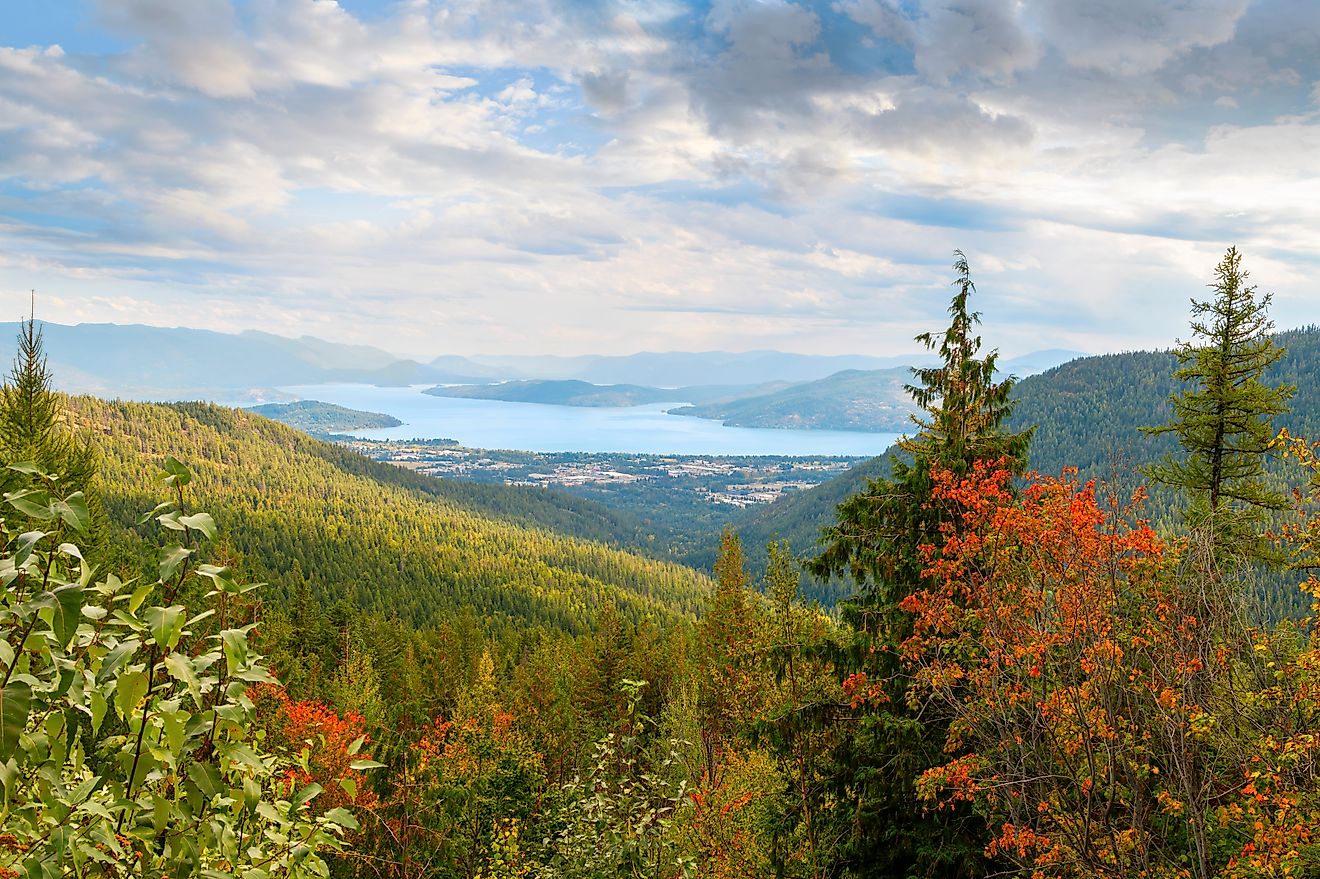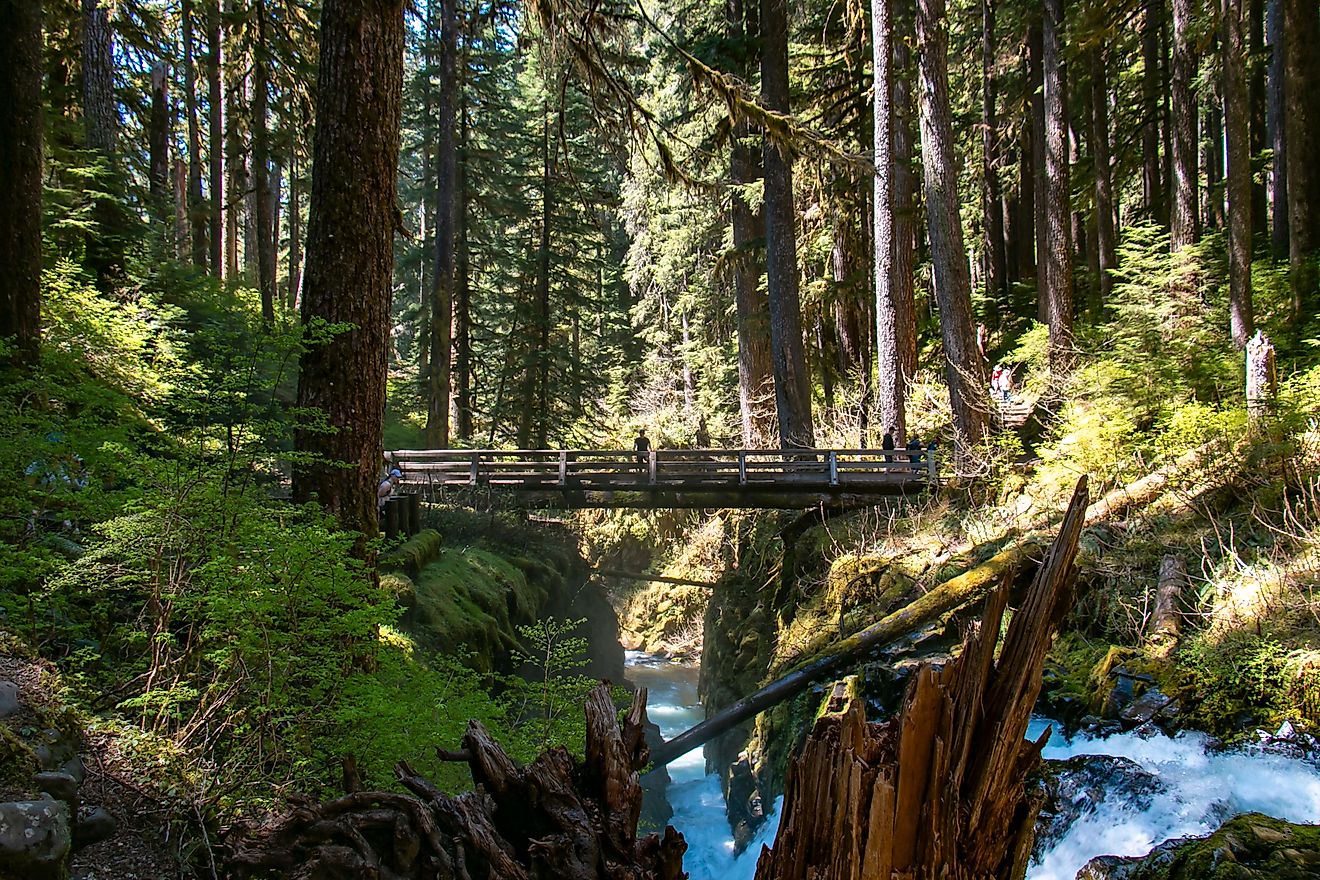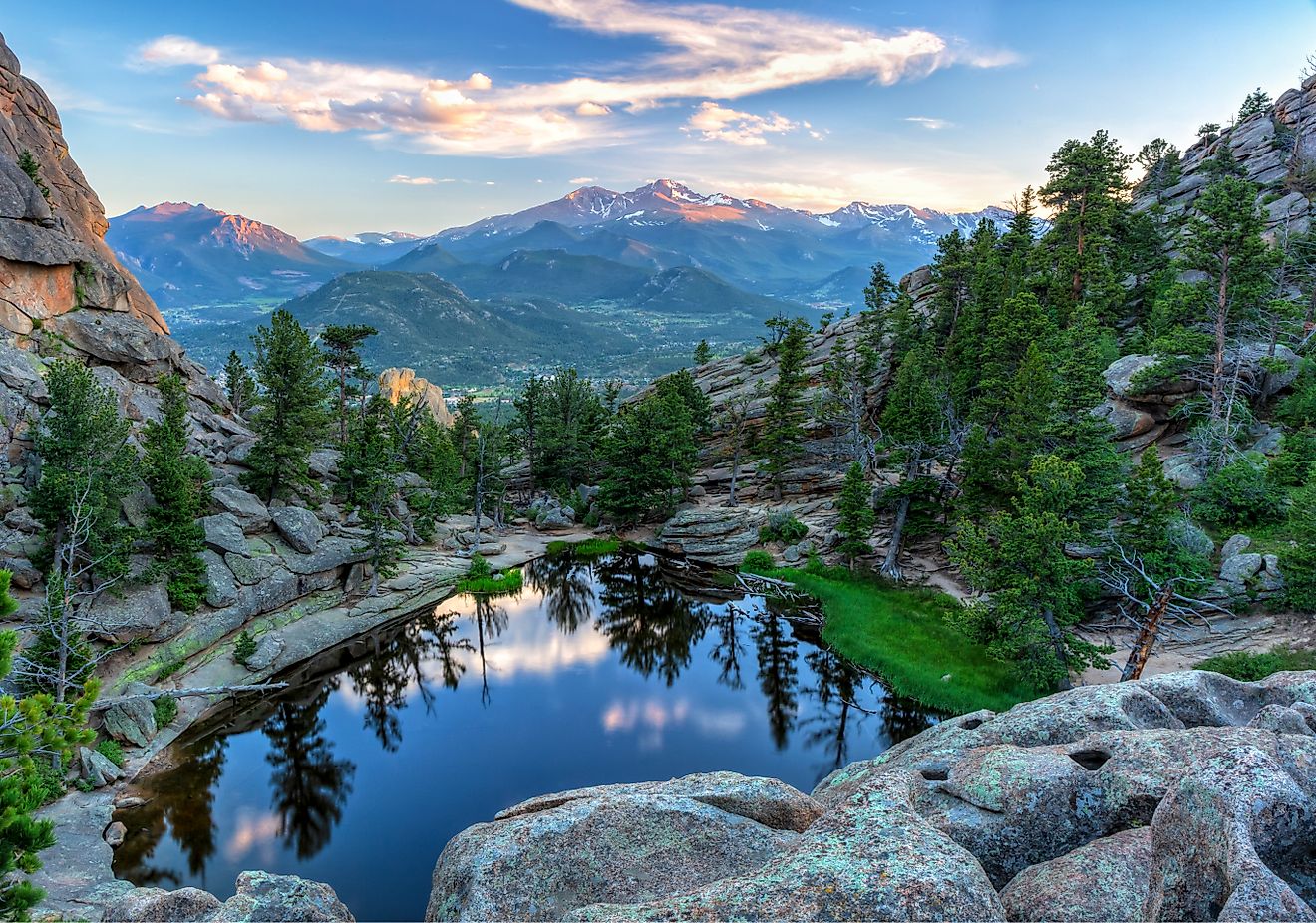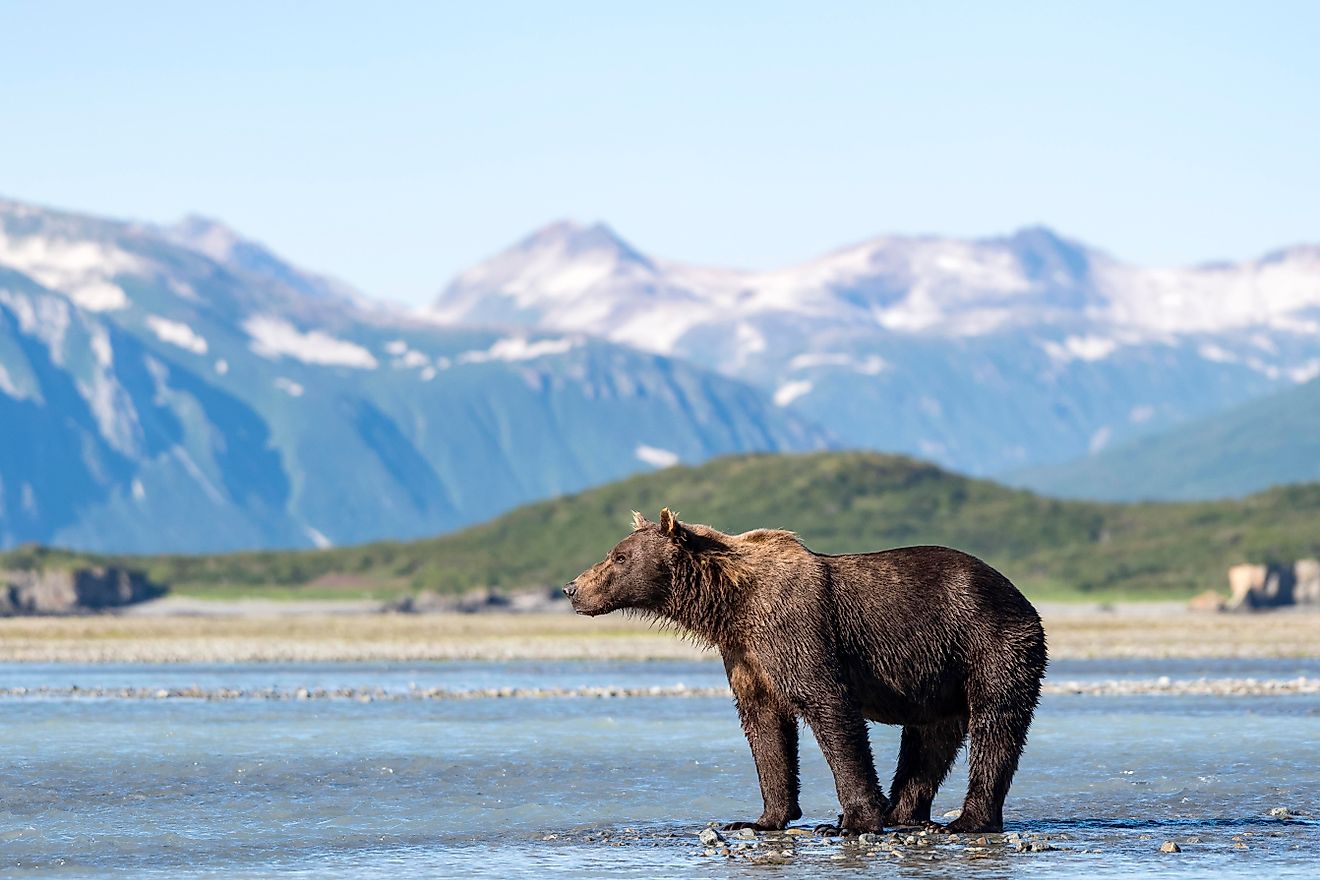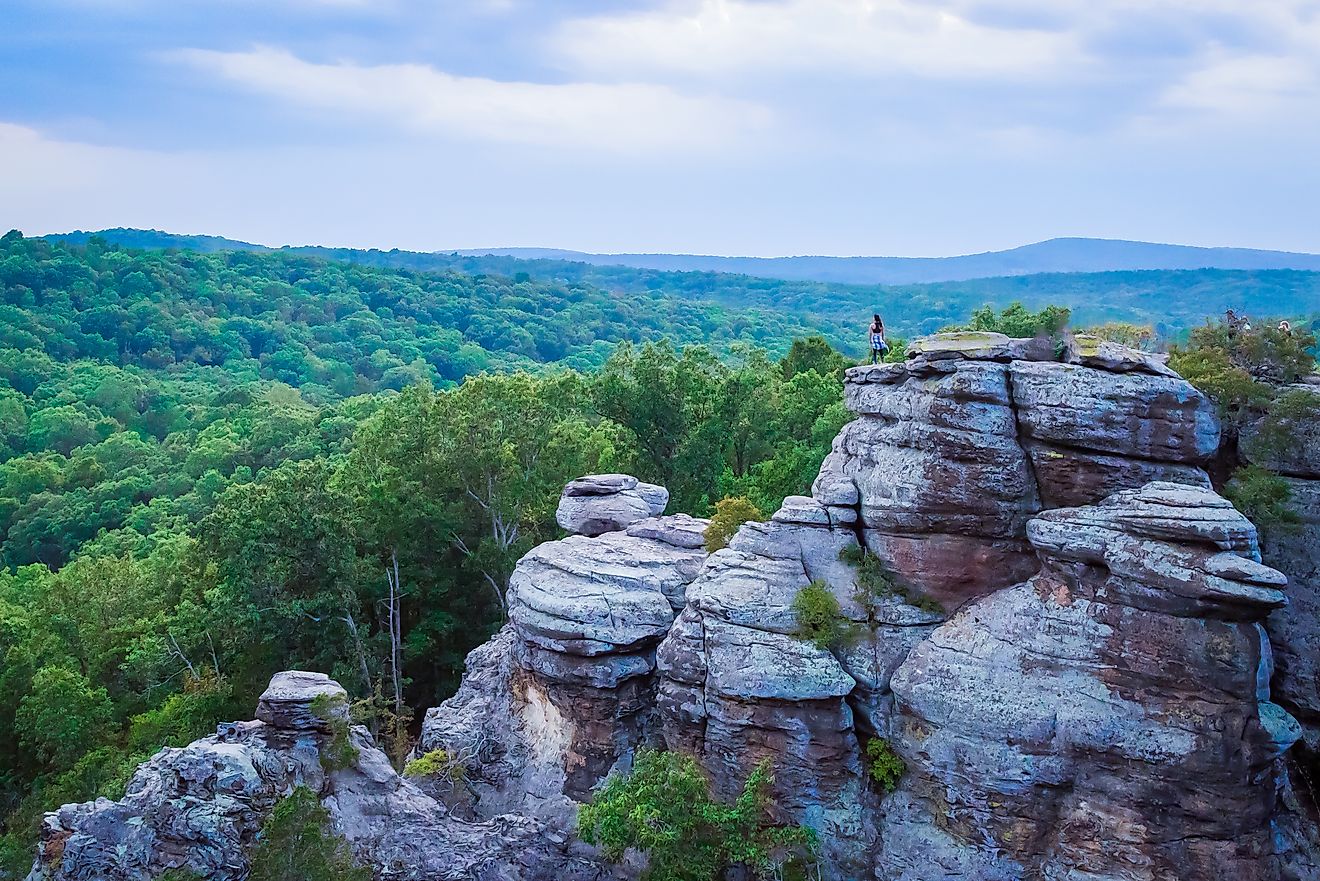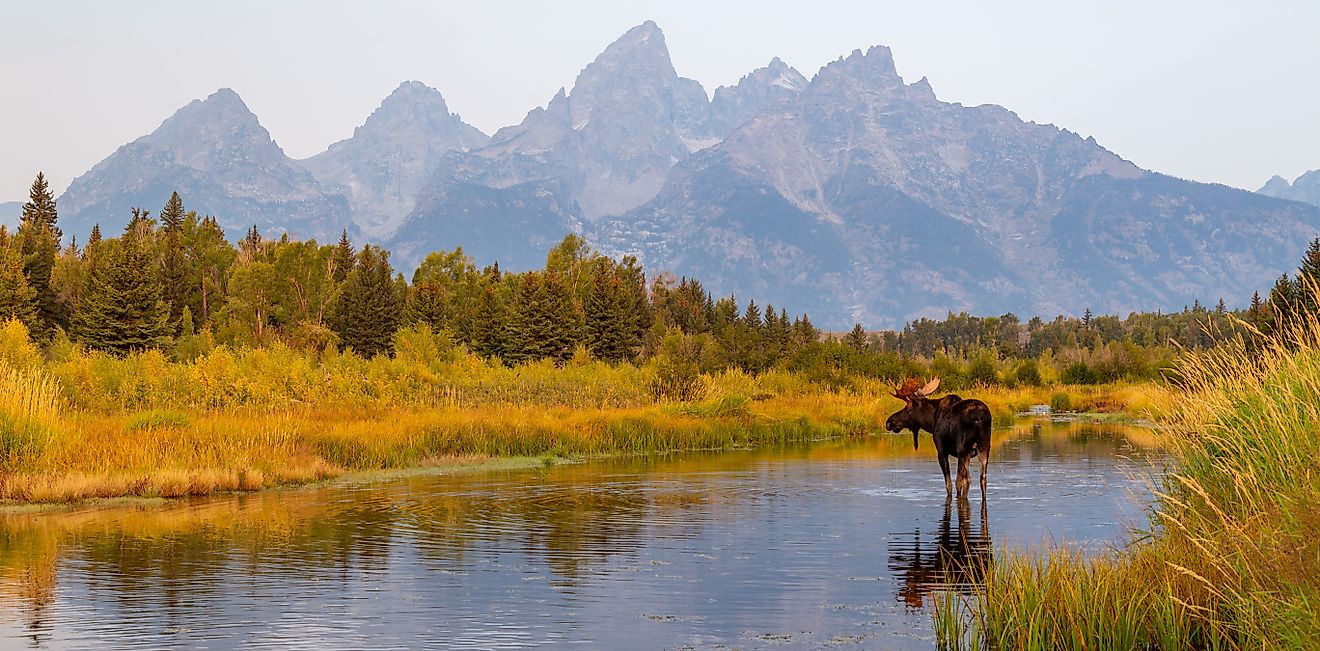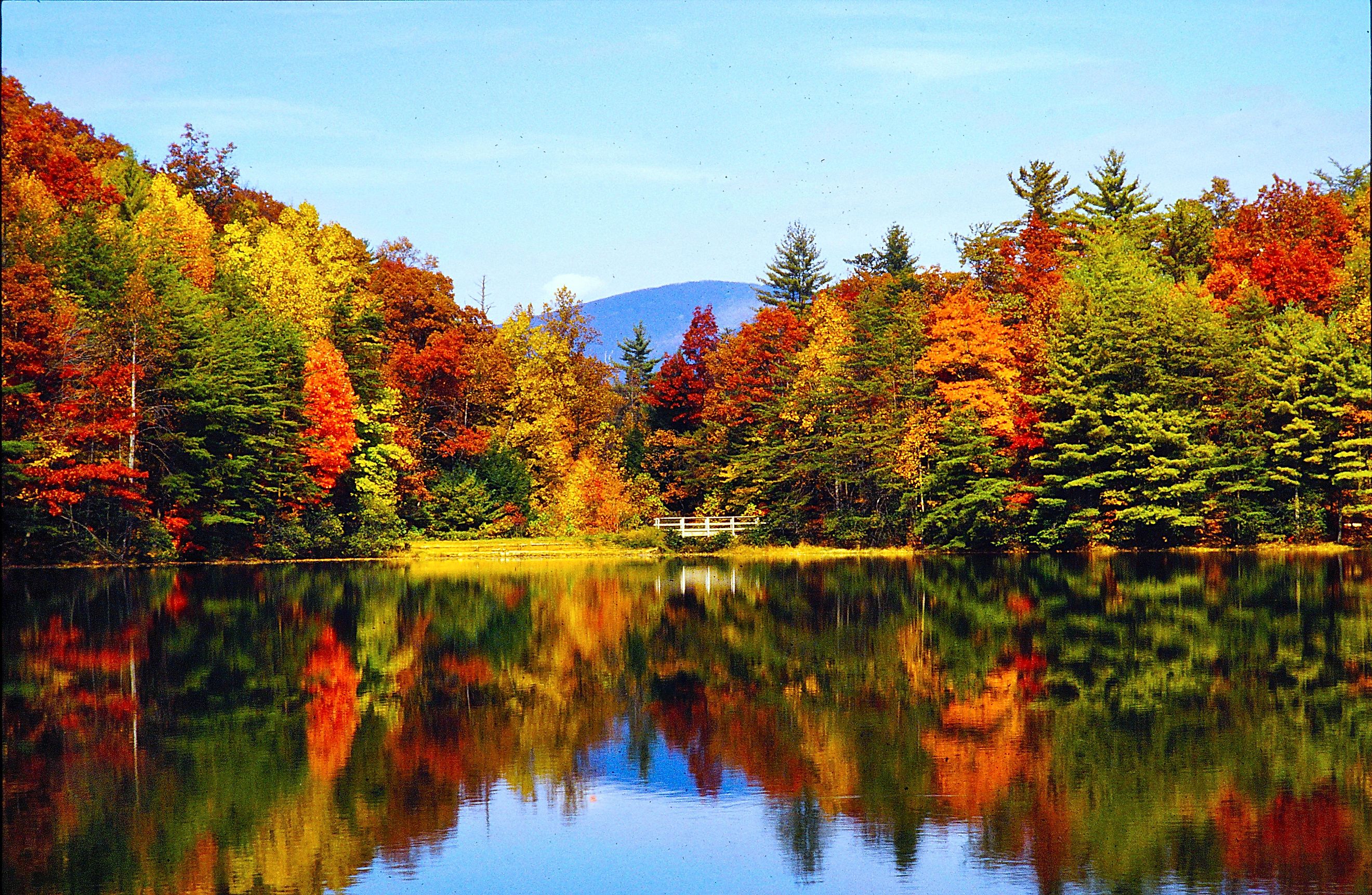
Chattahoochee-Oconee National Forest
The Chattahoochee-Oconee National Forest represents the untouched spirit of Georgia, a place where mountain streams carve deep valleys, ancient hardwoods stretch toward the sky, and wildlife thrives in remarkable abundance. Together, these twin forests cover more than 867,000 acres, protecting a diverse landscape that ranges from the rugged peaks of the Blue Ridge Mountains to the rolling woodlands of central Georgia. This vast wilderness serves as both a natural sanctuary and a living record of America’s conservation legacy.
Two Forests, One Living Landscape
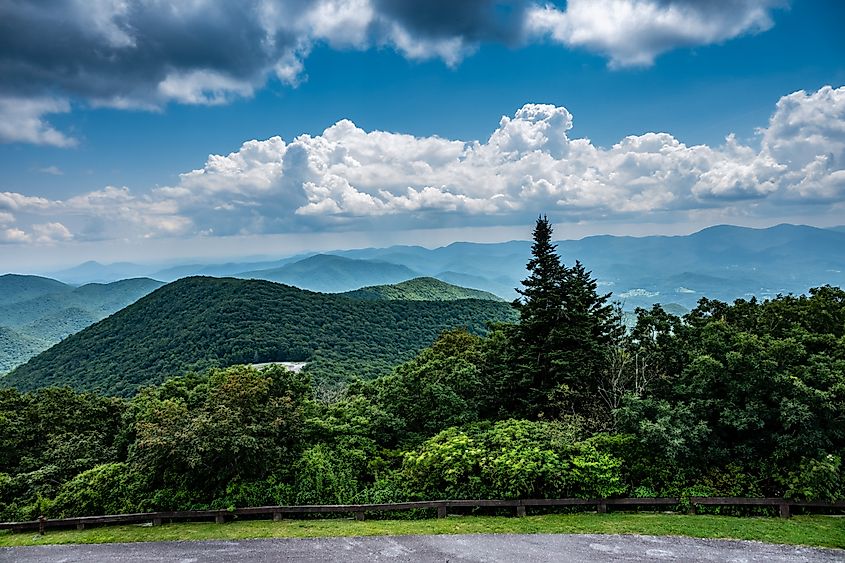
The Chattahoochee-Oconee National Forest is made up of two distinct yet connected ecosystems. The Chattahoochee National Forest, located in the mountains of northern Georgia, spans roughly 751,000 acres. It features high ridges, hidden waterfalls, and pristine rivers that wind through 18 counties. The Oconee National Forest, with about 116,000 acres, lies to the southeast and offers a gentler terrain of pine and hardwood forests, scenic wetlands, and historic rural landscapes.
Together, the two forests provide an ecological bridge across the state, linking mountain and piedmont, wilderness and farmland. The Chattahoochee’s rugged terrain includes Johns Mountain, Taylor Ridge, and Little Sand Mountain, while Rabun County holds the largest share of the eastern forest, with nearly 149,000 acres inside its borders.
A River, a Name, and Ancient Roots
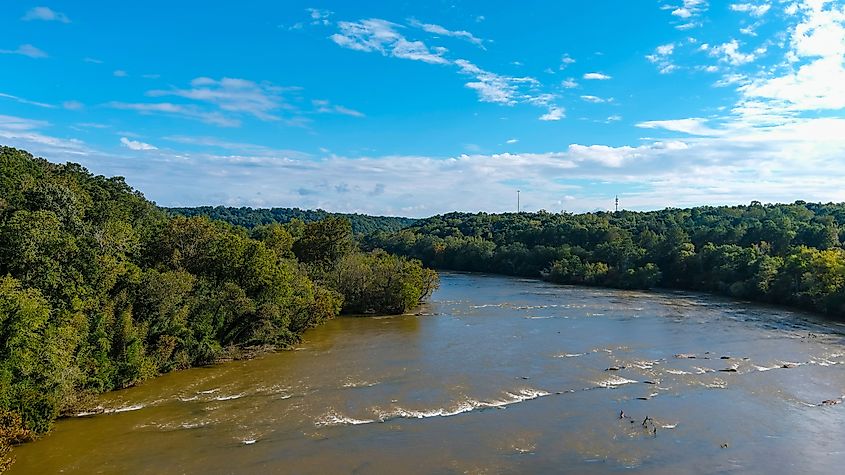
The Chattahoochee National Forest draws its name from the Chattahoochee River, whose headwaters begin in the North Georgia Mountains. The name itself traces back to the Muskogean languages once spoken by the Creek and Cherokee nations. “Chatta” means stone, while “ho chee” translates to marked or flowered, a reference to the patterned stones found along the river near what is now Columbus, Georgia.
This linguistic history reflects the deep Indigenous heritage of the region. Long before English settlers arrived, the Cherokee and Creek peoples thrived in North Georgia’s fertile valleys, hunting in the forests and fishing the river that would one day lend its name to the forest.
The Birth of a National Forest
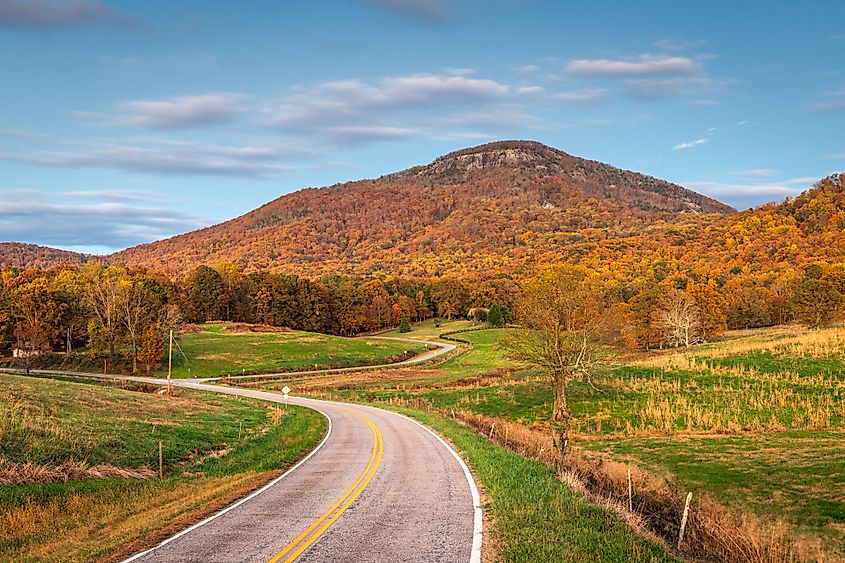
The Chattahoochee National Forest began as a bold conservation effort in the early 20th century. In 1911, the United States Forest Service purchased 31,000 acres of heavily logged and eroded land in Fannin, Gilmer, Lumpkin, and Union counties. That initial acquisition, purchased at $7 per acre from the Gennett family, became the cornerstone of Georgia’s national forest system.
Much of the forest’s early success can be traced to two figures: Ranger Roscoe Nicholson and Ranger Arthur Woody. Ranger Nicholson, known affectionately as “Ranger Nick,” advised the Forest Service on its first land purchases and championed the expansion of protected forest areas. The Coleman River Scenic Area, near Clayton, was later dedicated in his honor for his lifelong commitment to conservation.
Ranger Woody played an equally pivotal role in restoring North Georgia’s wildlife. After decades of overhunting and poor land use, deer and trout had nearly vanished from the mountains. Woody personally financed the reintroduction of deer, purchasing fawns and nurturing them until they could be released into the wild. He also helped restock mountain streams with trout, carrying them over narrow, unpaved roads in an effort to rebuild the region’s natural balance.
Woody’s legacy endures in landmarks such as Woody Gap School, the smallest public school in Georgia, and Sosebee Cove, a 175-acre hardwood tract preserved in his memory. His conservation ethic helped shape the very identity of the forest that stands today.
A Forest Takes Shape
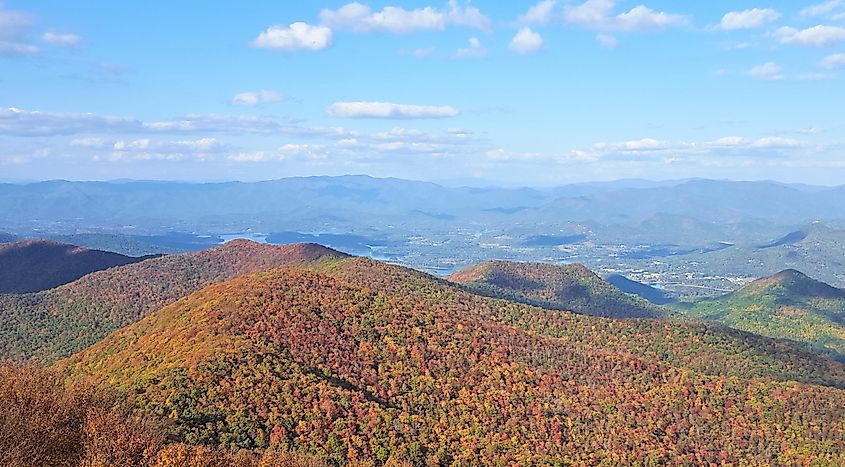
In 1936, President Franklin D. Roosevelt officially designated the Chattahoochee as a separate National Forest. That same year, the forest was organized into two ranger districts: Blue Ridge and Tallulah. Over time, additional land acquisitions and reorganizations helped expand its boundaries and refine its management.
In 1959, President Dwight D. Eisenhower added a new dimension to Georgia’s forest system by proclaiming the Oconee National Forest in central Georgia. Spanning 96,000 acres, the Oconee was later combined with the Chattahoochee to form the Chattahoochee-Oconee National Forests known today.
Rivers, Trails, and Waterfalls
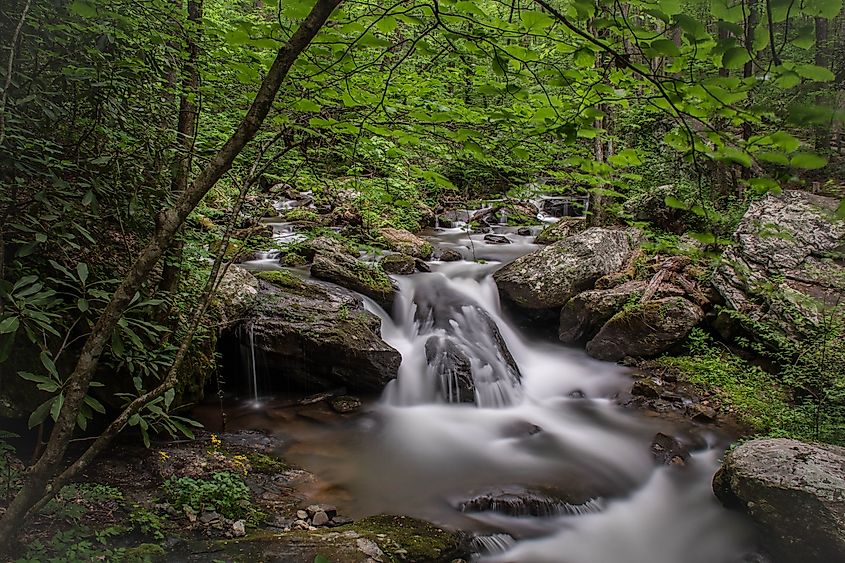
Few places in the Southeast boast such a variety of waterways as the Chattahoochee-Oconee National Forest. Together, the two forests contain more than 2,200 miles of rivers and streams, including about 1,367 miles of trout streams. These waters sustain countless species of fish, amphibians, and reptiles, while also offering some of the most scenic landscapes in Georgia.
Among the forest’s most celebrated natural features is Anna Ruby Falls, a twin waterfall where Curtis and York creeks plunge more than 150 feet down a rocky cliffside. The site embodies the serene beauty of North Georgia’s mountain streams and remains one of the region’s most photographed landmarks.
Another major feature is the Chattooga River, designated a Wild and Scenic River in the 1970s. This free-flowing waterway cuts through the borderlands of Georgia and South Carolina, offering both ecological significance and cinematic fame. The river served as the filming location for the 1972 movie "Deliverance," though its real identity as the Chattooga has endured beyond Hollywood’s portrayal.
Wilderness Preserved
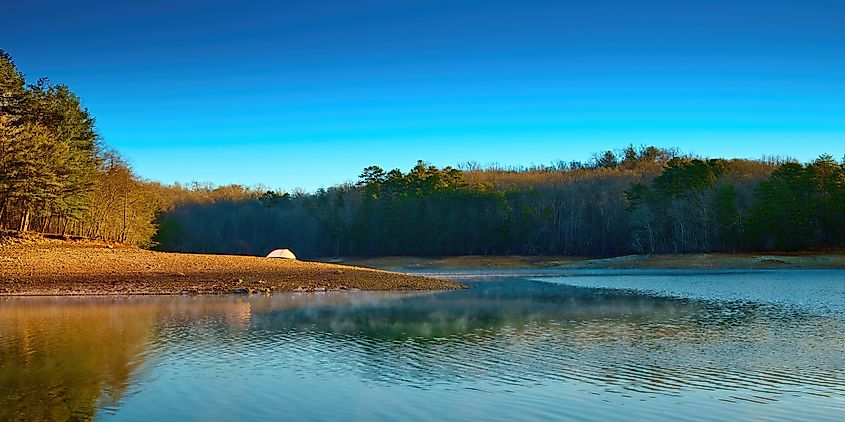
The Chattahoochee-Oconee National Forest protects an extraordinary range of wilderness areas, each with its own terrain and ecological story. Ten federally designated wilderness zones fall within its boundaries, covering tens of thousands of acres.
-
Cohutta Wilderness: Shared with Tennessee’s Cherokee National Forest, this is one of the largest wilderness areas in the eastern United States.
-
Ellicott Rock Wilderness: Spanning the corners of Georgia, South Carolina, and North Carolina, it protects the headwaters of the Chattooga River.
-
Blood Mountain Wilderness: Encompasses a rugged section of the Appalachian Trail and showcases steep ridges and panoramic views.
-
Brasstown Wilderness: Home to Brasstown Bald, Georgia’s highest peak at 4,784 feet.
-
Mark Trail Wilderness: Known for its deep forests, waterfalls, and remote hiking trails.
-
Raven Cliffs Wilderness: Features dramatic cliffs, cascading falls, and thriving mountain flora.
-
Tray Mountain Wilderness: Offers high-elevation forests and sweeping views along the Appalachian Trail.
Other wilderness areas, such as Mark Trail, Raven Cliffs, and Tray Mountain, preserve old-growth forests, waterfalls, and rare habitats where flora and fauna thrive largely undisturbed. Each wilderness area plays a vital role in maintaining biodiversity and ensuring that Georgia’s wildest places remain untouched for future generations.
Wildlife of the Forest
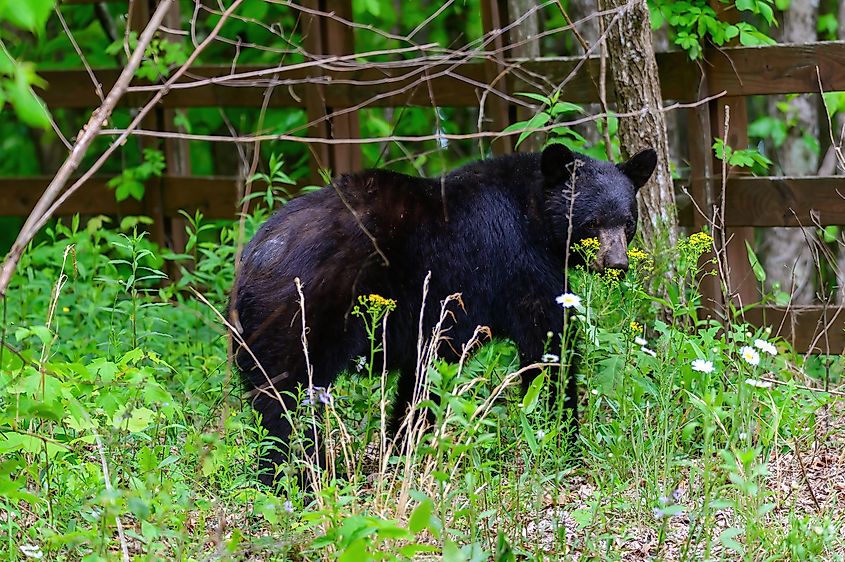
The forests teem with wildlife, both familiar and rare. Mammals such as the American black bear, bobcat, coyote, and white-tailed deer roam the woodlands. Smaller animals like the river otter, beaver, fox, shrew, and various bat species contribute to the ecosystem’s balance.
Birdlife abounds as well, including hawks, owls, sparrows, eagles, cardinals, blackbirds, and hummingbirds. Wetlands and waterways host ducks and geese, while the forest’s many creeks and ponds shelter amphibians and reptiles.
One of the most unique inhabitants is the Blue ghost firefly (Phausis reticulata), known for its mysterious blue glow. This bioluminescent insect creates an ethereal nighttime display in the forest during late spring, earning the Chattahoochee-Oconee a reputation for natural magic after dark.
Efforts are also underway to reintroduce the critically endangered red wolf, once native to the Southeast. Restoring such a predator to its natural range marks an important step in ecological recovery.
Recreation and Natural Wonders
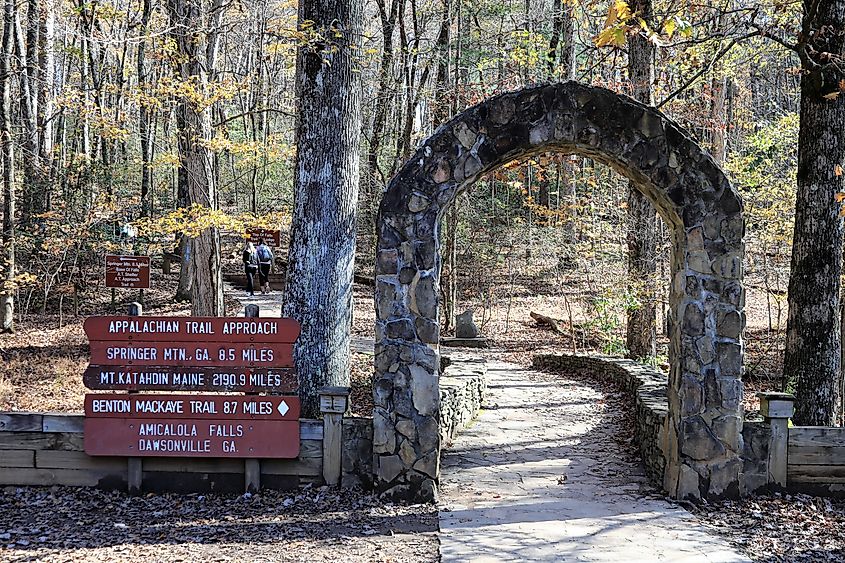
The Chattahoochee-Oconee National Forest supports an extensive network of recreation areas, hiking trails, and scenic drives. The forest contains more than 450 miles of trails and 1,600 miles of roads, offering access to mountain vistas, hidden coves, and historic landmarks.
The Appalachian Trail begins its 2,174-mile journey within the forest, tracing the spine of the Blue Ridge northward. Hikers encounter dramatic overlooks, dense hardwood canopies, and encounters with wildlife along the way. The forest also features Georgia’s highpoint, Brasstown Bald, offering panoramic views that stretch into North Carolina and Tennessee.
Lakes, such as Lake Conasauga, Lake Russell, and Lake Burton, provide opportunities for boating, fishing, and quiet reflection. The Oconee National Forest’s rolling terrain complements the Chattahoochee’s ruggedness, making it ideal for camping, horseback riding, and exploring the gentle streams and pine forests of middle Georgia.
A Conservation Legacy
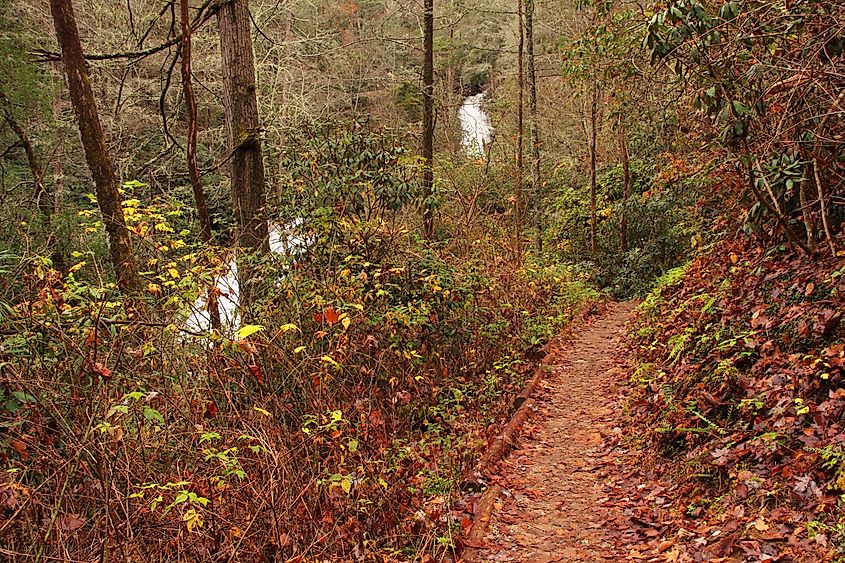
The Chattahoochee-Oconee National Forest’s headquarters in Gainesville, Georgia, coordinates the work of four ranger districts: Blue Ridge, Chattooga River, Conasauga, and Oconee. Together, these districts oversee everything from wildlife management to trail maintenance and watershed protection.
Beyond its scenic appeal, the forest serves as a vital natural resource for Georgia, protecting water quality, preserving habitats, and supporting sustainable recreation. The headwaters of both the Chattahoochee and the Chattooga Rivers begin here, ensuring clean water for much of the Southeast.
The forest’s creation marked a turning point in regional history, reversing decades of deforestation and soil erosion. Through the efforts of early conservationists and continued stewardship, what was once a landscape scarred by overuse has become one of the most ecologically diverse forests in the country.
The Spirit of the Mountains
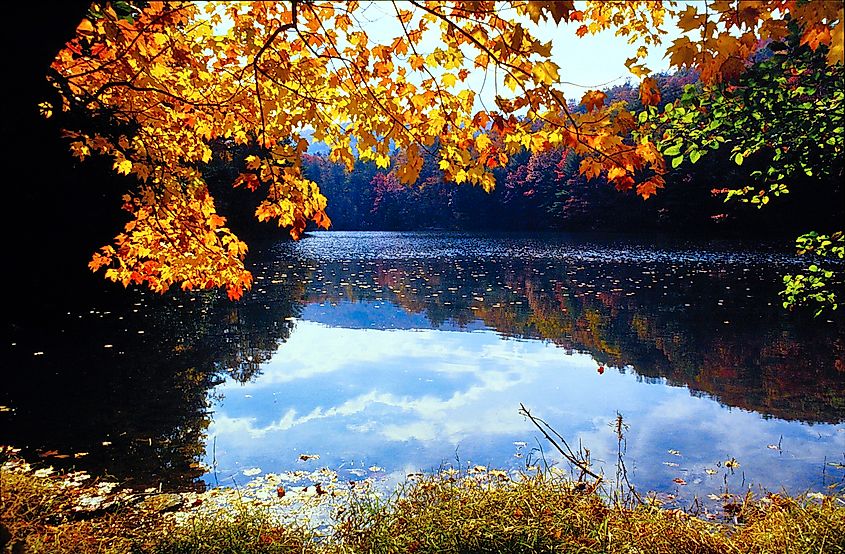
The Chattahoochee-Oconee National Forest stands as a living monument to the enduring relationship between land and legacy. Its mountains, rivers, and valleys hold stories that span centuries, from the Cherokee and Creek nations to the modern era of preservation and exploration.
This vast expanse of wilderness remains one of Georgia’s greatest treasures, a place where nature’s resilience continues to shape the state’s identity. With each rustling leaf and rushing stream, the forest whispers reminders of the forces that built the land and the visionaries who fought to protect it.
Quick Facts: Chattahoochee-Oconee National Forest
| Category | Details |
|---|---|
| Location | Northern and eastern Georgia |
| Total Area | 867,265 acres |
| Established | July 9, 1936 (merged in 1959) |
| Chattahoochee Forest Size | 751,069 acres |
| Oconee Forest Size | 116,196 acres |
| Counties Covered | 18 in the Chattahoochee, 8 in the Oconee |
| Headquarters | Gainesville, Georgia |
| Highest Point | Brasstown Bald, 4,784 feet |
| Major Rivers | Chattahoochee River, Chattooga River |
| Miles of Streams | Over 2,200 miles (1,367 miles of trout streams) |
| Recreation Trails | 450+ miles |
| Designated Wilderness Areas | 10 total |
| Famous Waterfalls | Anna Ruby Falls |
| Notable Wildlife | Black bear, bobcat, deer, otter, blue ghost firefly |
| Fun Fact | The movie "Deliverance" was filmed on the Chattooga River |

